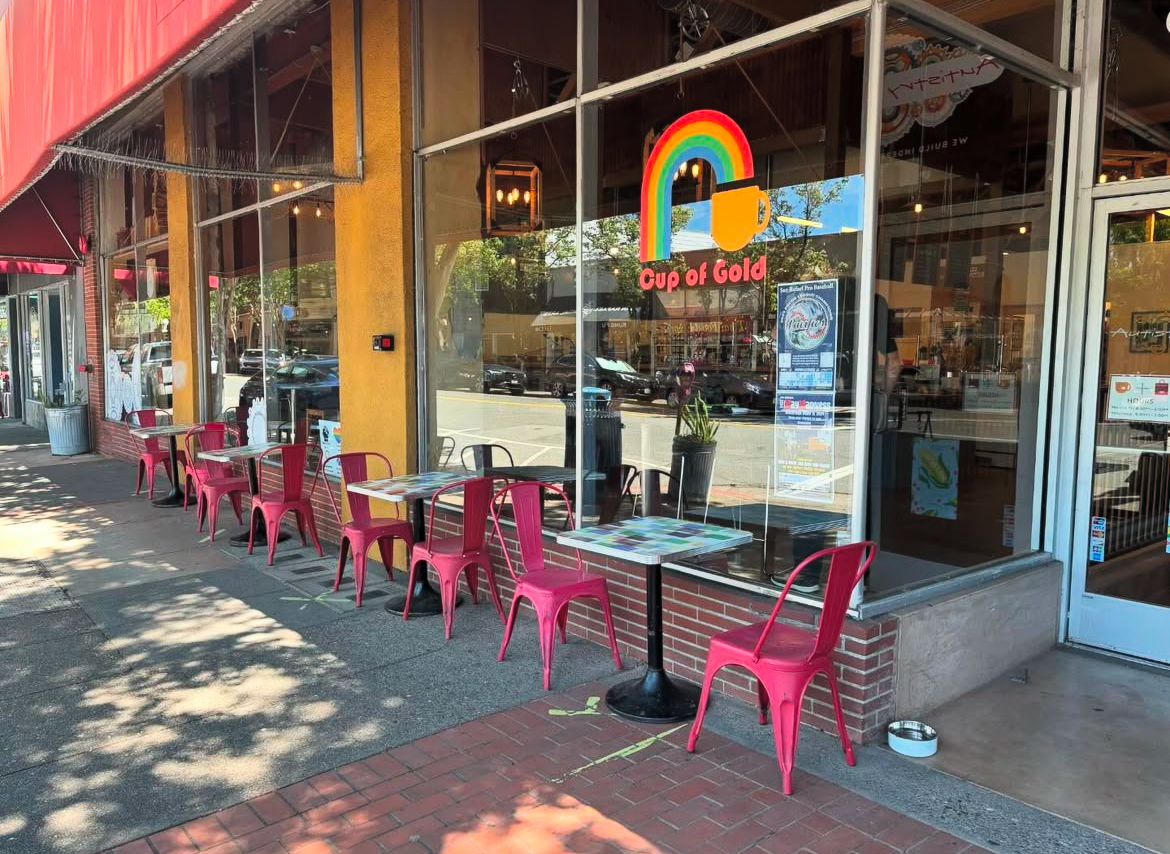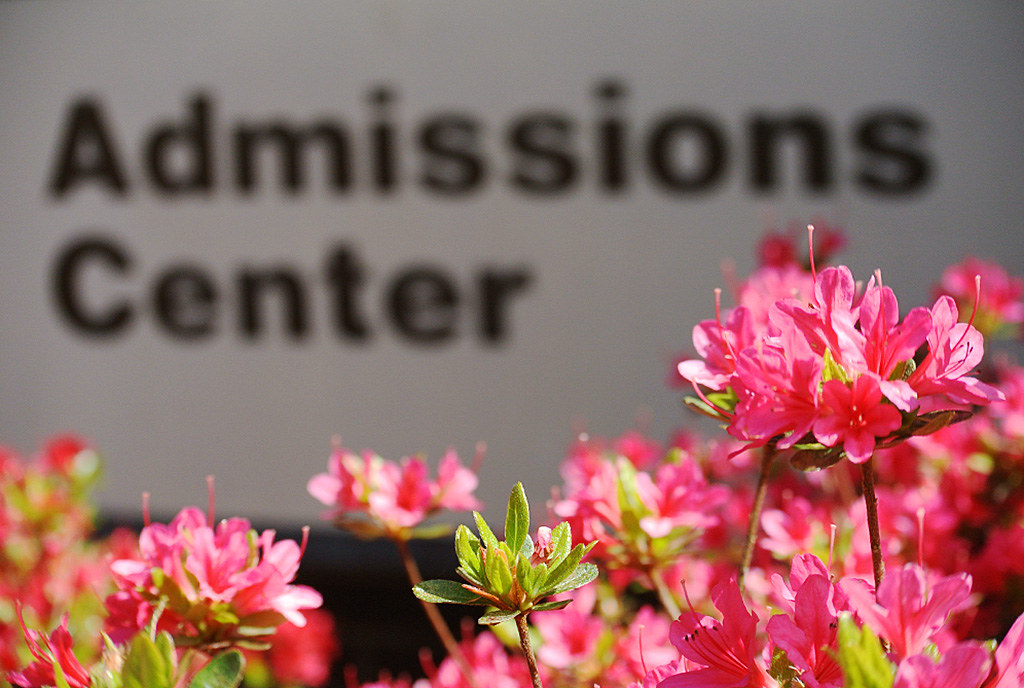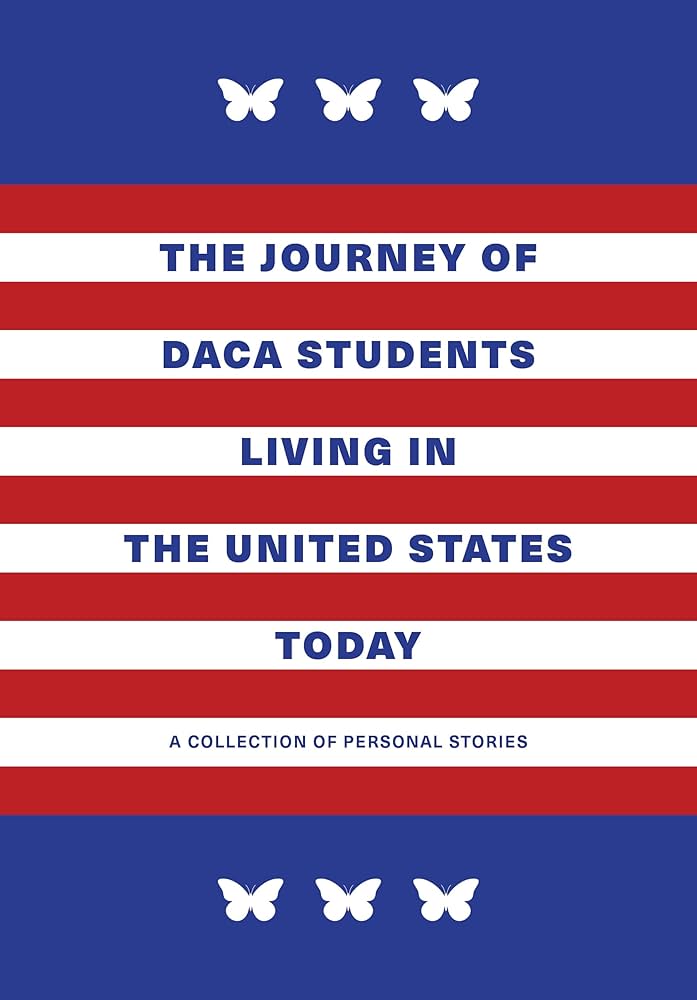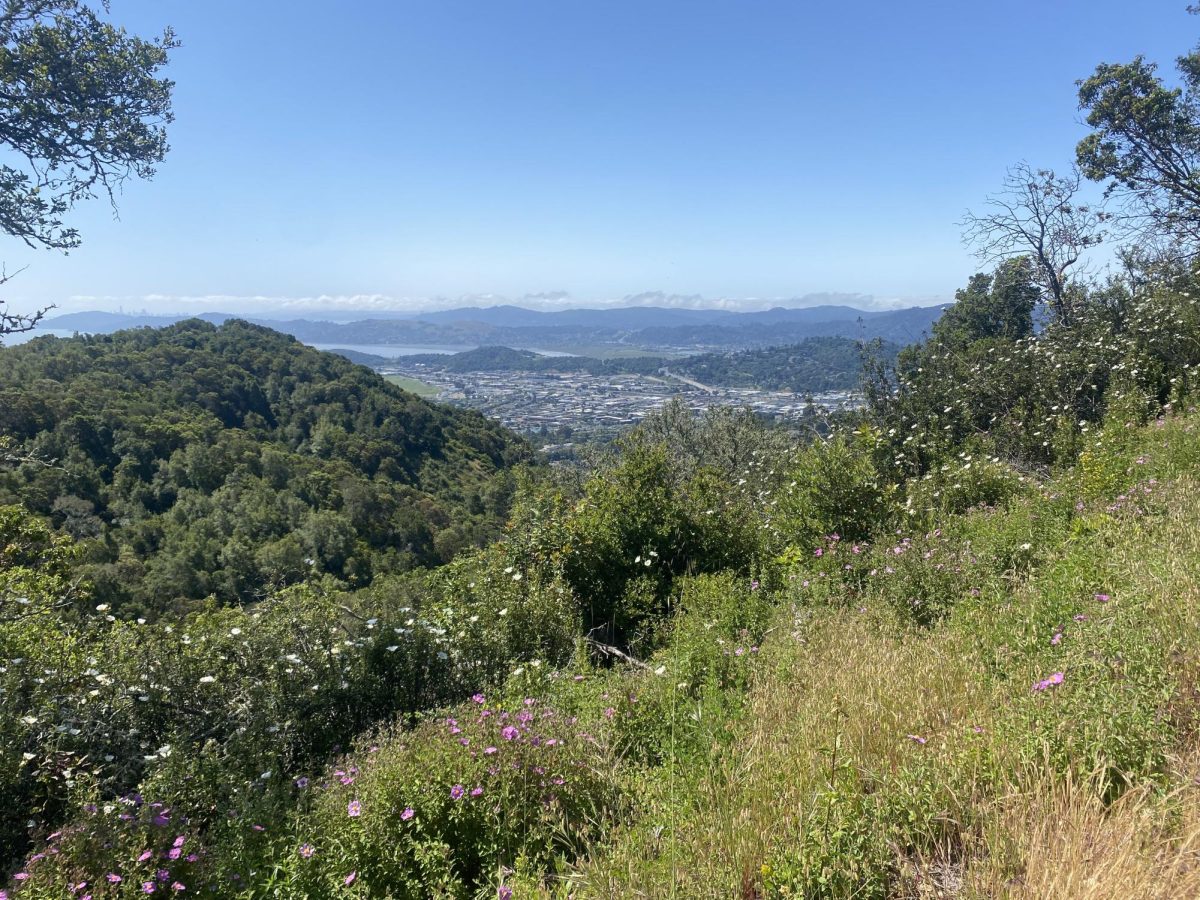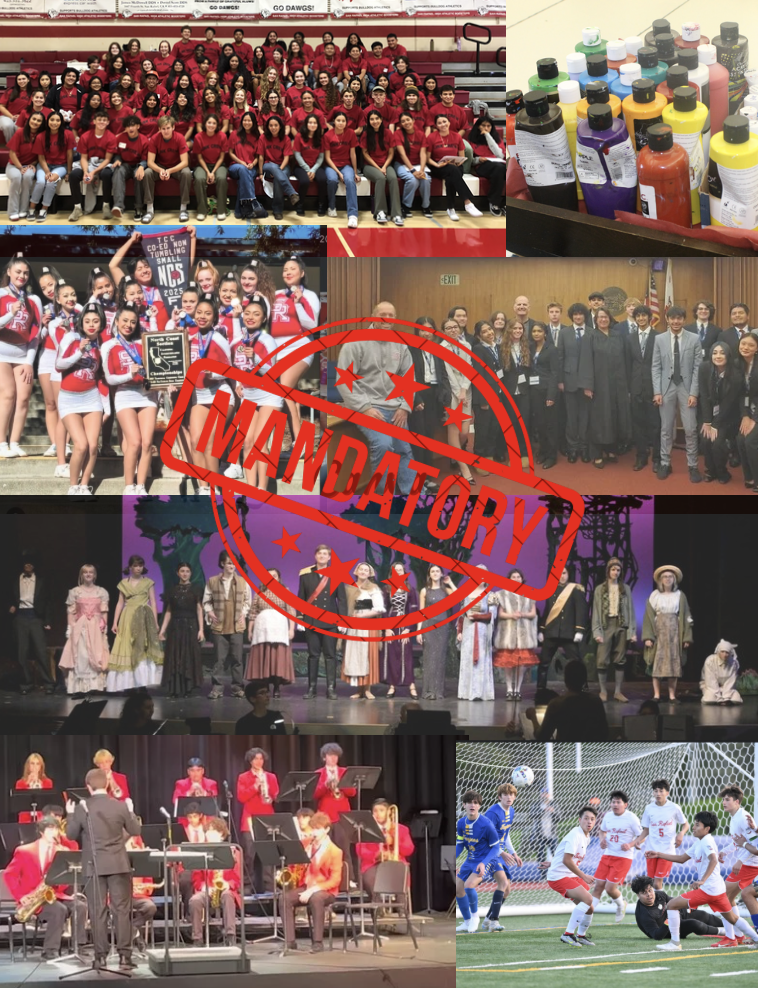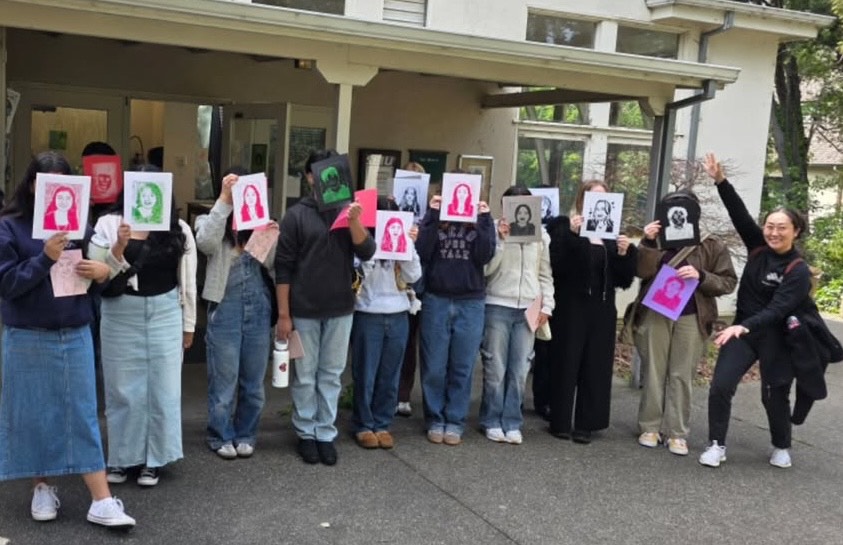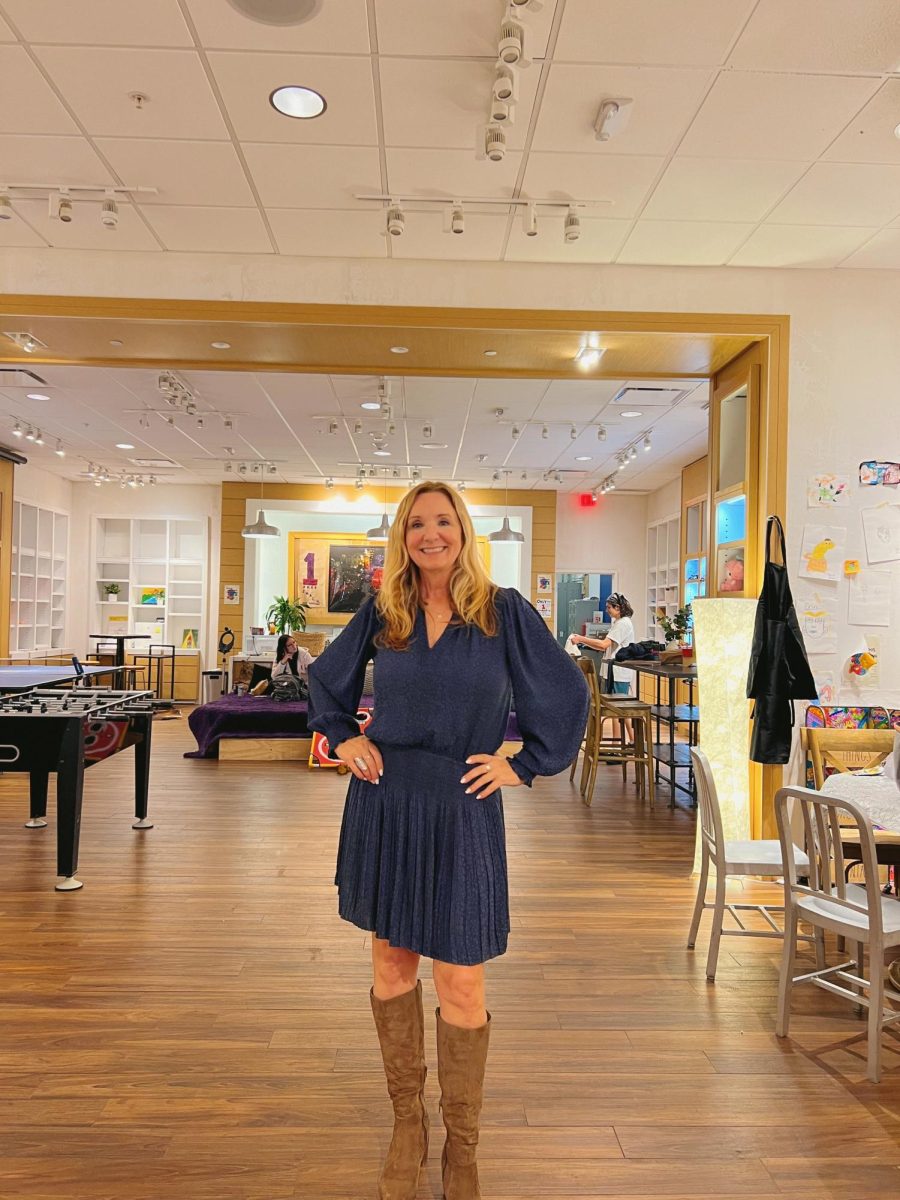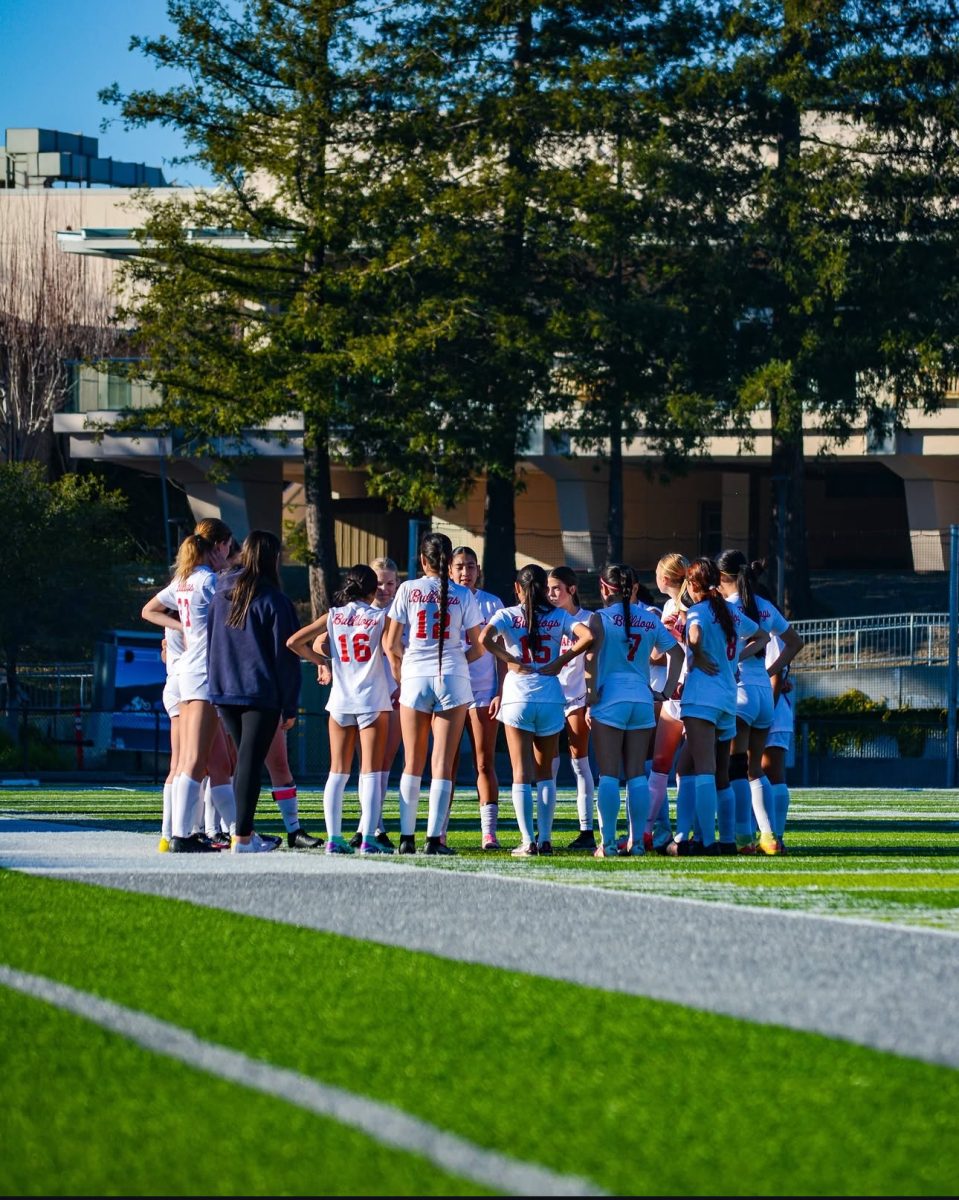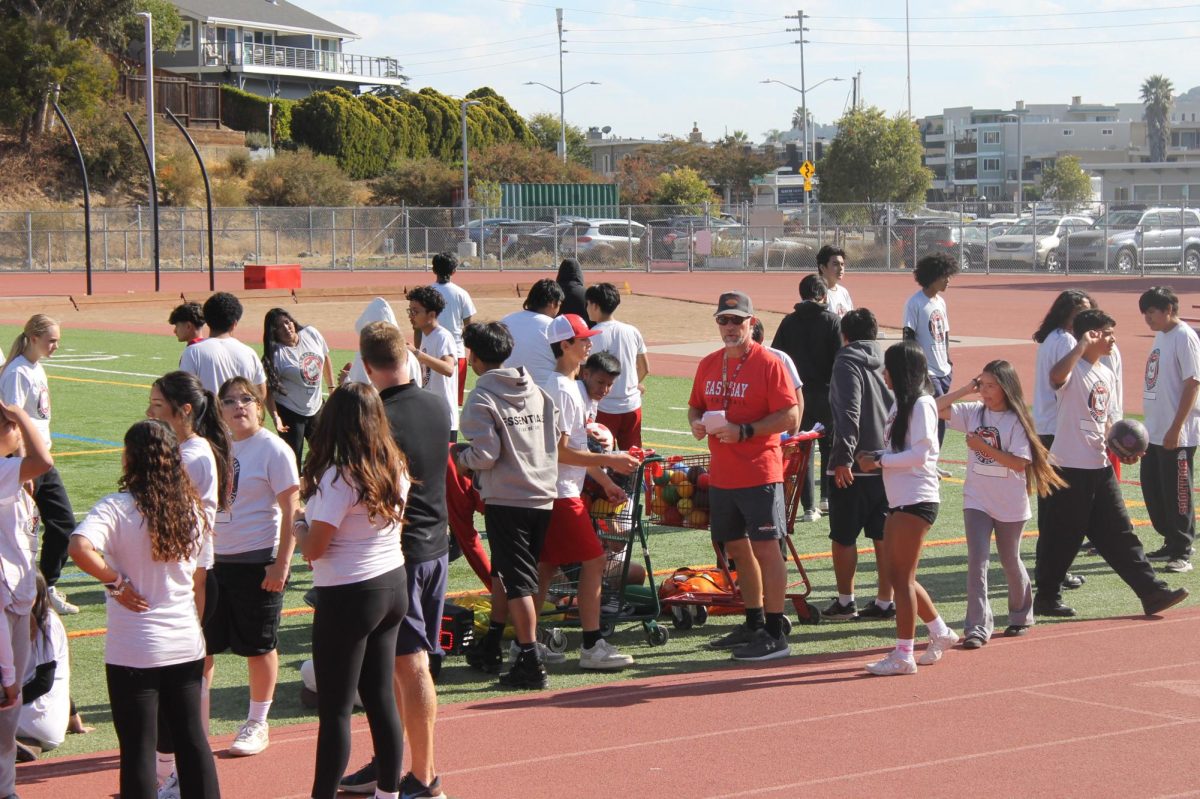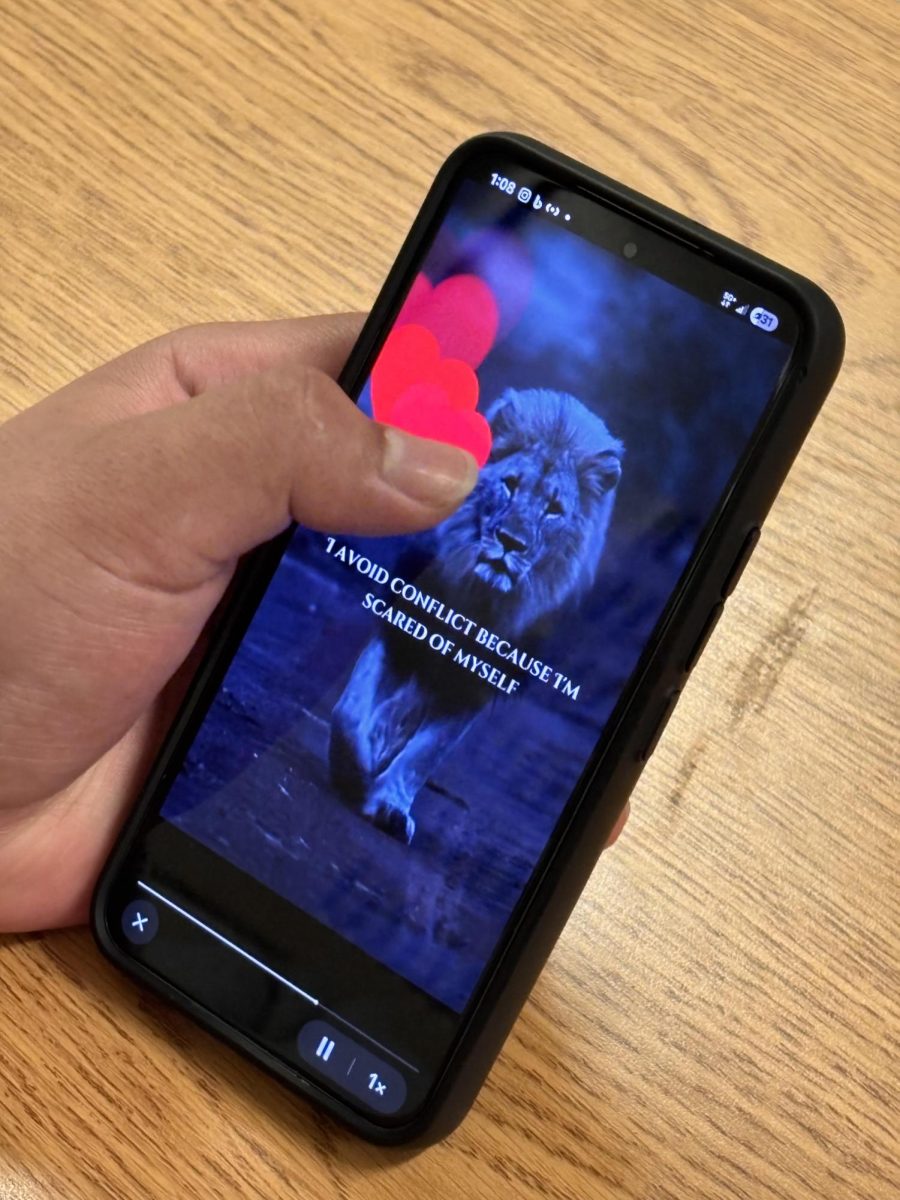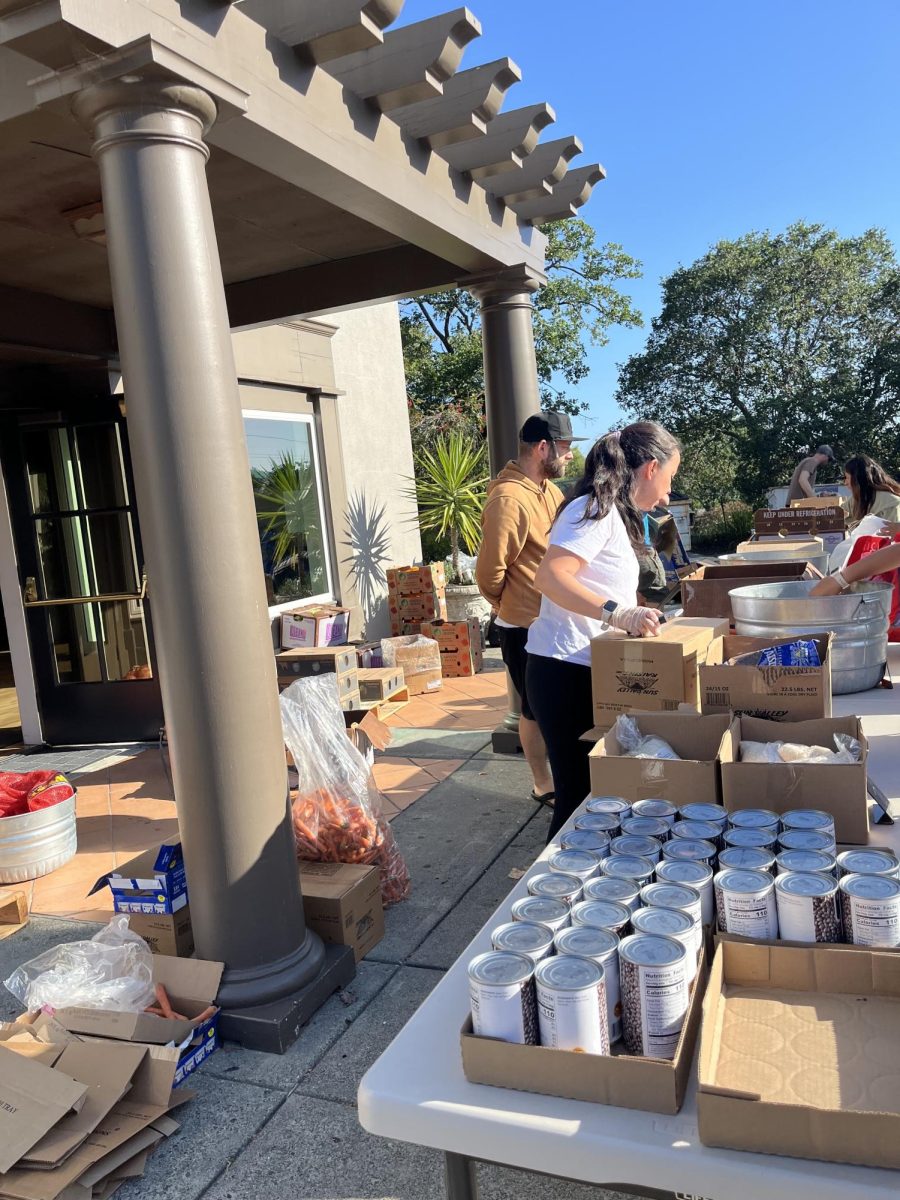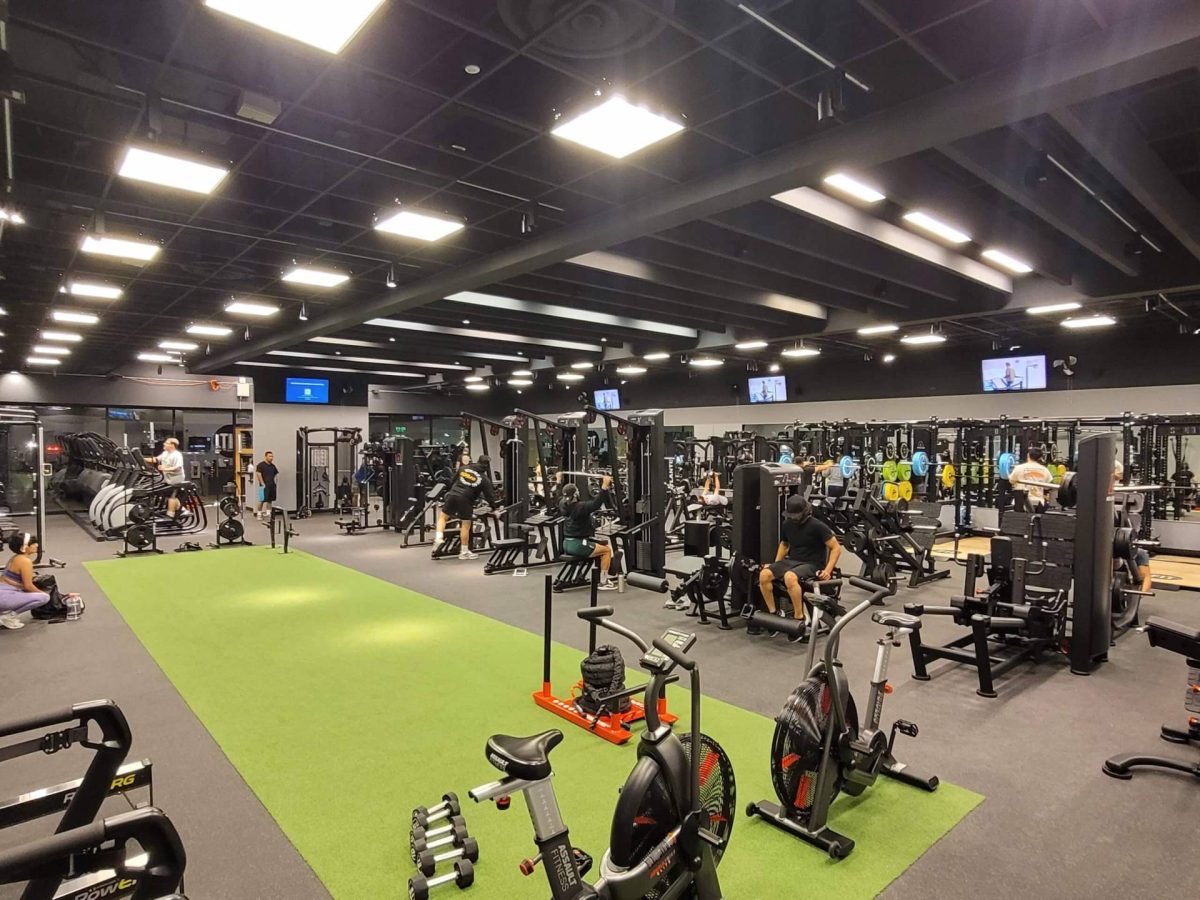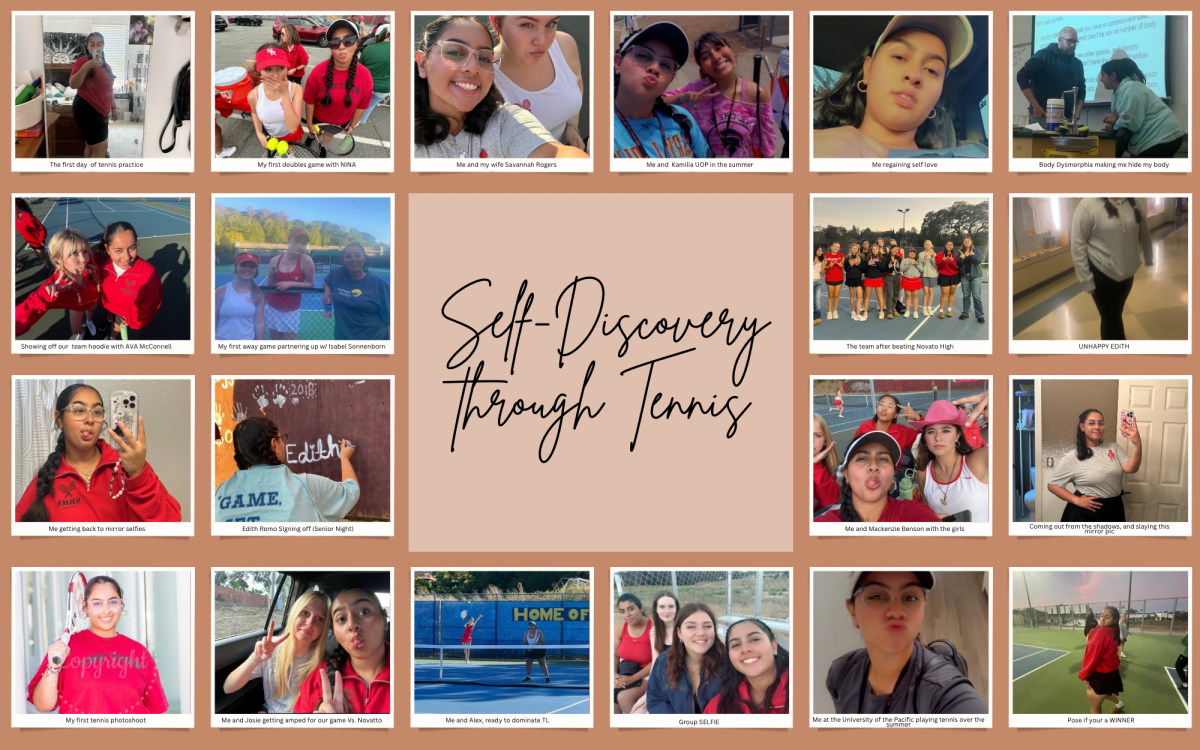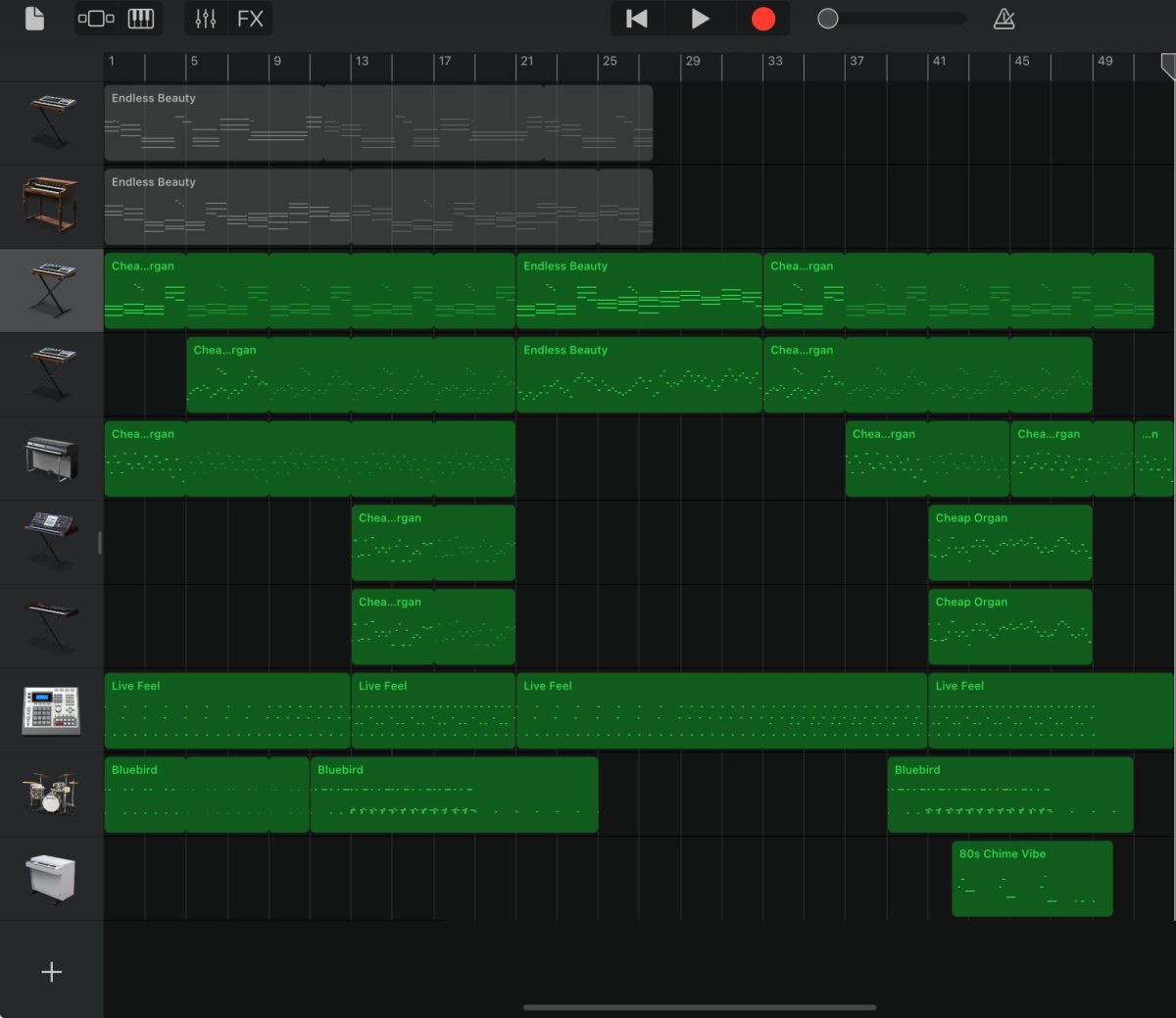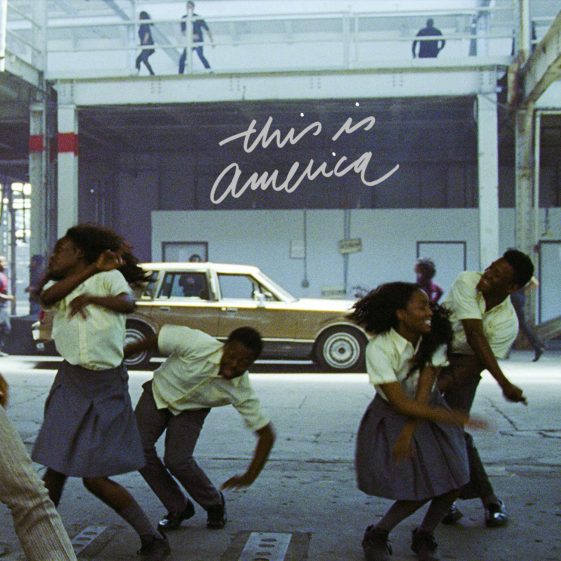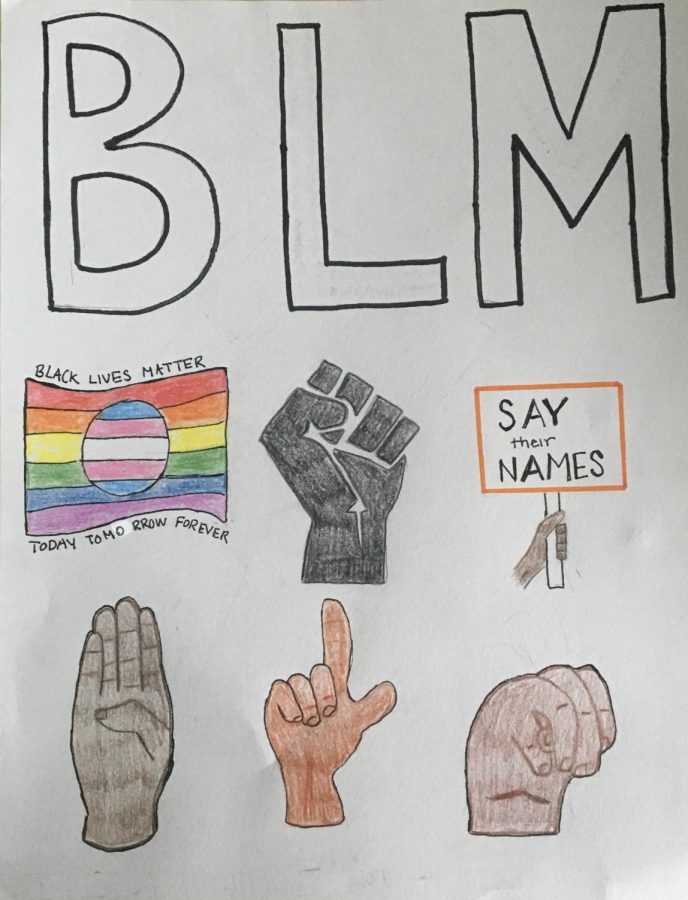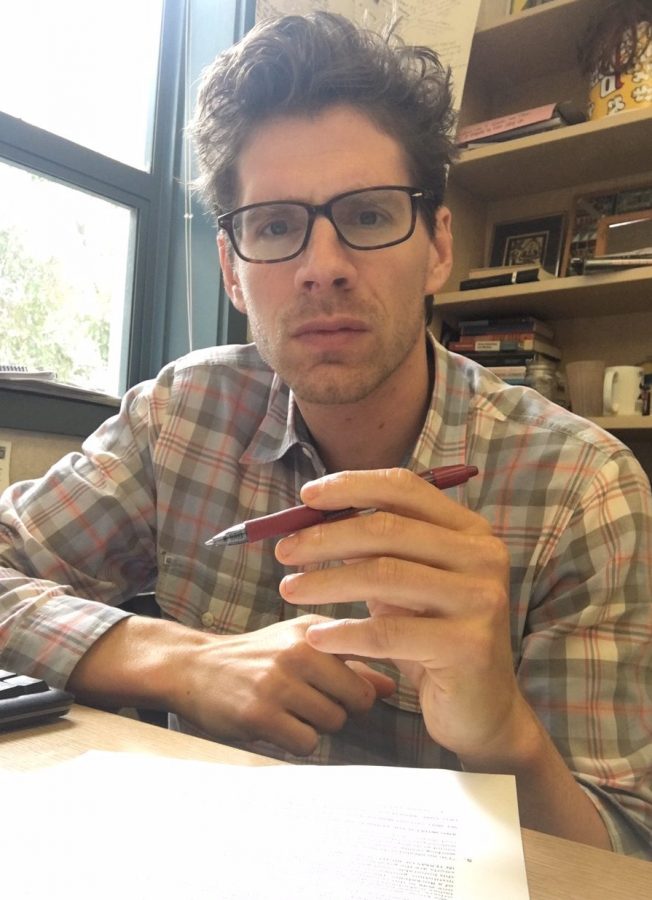Note: Because this is such a sensitive topic, the majority of student names used in the story are pseudonyms or completely anonymous in order to make interviewees feel safe and ensure confidentiality.
Coming from Totonicapan, Guatemala and carrying nothing but a backpack, 18-year-old Mariana Hernandez stares into the distance looking over at “Los Estados Unidos,” a place she would call her home for the next chapter of her life. A place that would open job opportunities for her, a place where she would have her kids and raise them, yet a place where the thought of being deported would linger in the back of her mind.
Except now this fear has grown larger, consuming her daily life.
“When I came to the United States, I knew what I was risking. I left everything behind me, my family, my childhood and most importantly my fear. I’ve had to build a life for myself and now for my children. So they can become successful, be able to receive an education, and have a future,” she says.
It has been three months since President Donald Trump took office in January of this year, and according to an article by Newsweek, there have already been over 100,000 deportations across the country. The U.S. Immigration and Customs Enforcement (ICE) has also reportedly been spotted in multiple areas across California such as Bakersfield, Pomona, and Los Angeles.
In the years before, Hernandez had already seen so many news stories where undocumented immigrants like her were being deported every day; families getting separated, working individuals being taken away. She even recalled watching a disturbing and widely shared “ASMR Illegal Alien deportation” video depicting footage of men in chains being loaded onto planes for transport to a notorious prison in El Salvador.
“I don’t even know how to explain what I felt when watching that video. Why do they think it’s funny to post something like that? It’s f**king ridiculous,” she says as tears fall from her eyes. Although it was always sad and hard to hear, most of the news was either in a different state or far from where she lived.
Until now.
It was the news that ICE had been just spotted 20 minutes away from where she lived in Marin that completely brought in a new sense of fear for her: According to Point Reyes Light, George Alfaro wrote about how “ICE personnel were in the Novato area in late January, and in the San Rafael area in mid-February. These notices were given to [the Marin County Sheriff’s Office] and its activity did not include any details, and ICE did not report whether anyone was detained”
“I was in utter shock; I didn’t think and couldn’t believe ICE was getting closer and closer to home now,” she says.
We tried to get in contact with the San Rafael mayor, Kate Colin, and ask about this incident but she was unfortunately unable to give us any information beyond a form statement:
“The City of San Rafael remains steadfast in its commitment to supporting, and uplifting our immigrant communities. Every resident-regardless of immigration status-deserves to feel safe, supported, and valued. As a matter of both policy and practice, SRPD does not engage in immigration enforcement. Under current federal law, this means that SRPD: does not collaborate with federal immigration officials in investigations, interrogations, detentions, or arrests related to immigration status; does not conduct immigration enforcement actions; and does not share information regarding immigration status with federal agencies unless required by law.”
According to an article by the MCBA, Marin County itself holds “about 16,000 undocumented immigrants, approximately 6% of the county’s overall population” [according to an estimation by the Migration Policy Institute.] Many of these undocumented immigrants are parents to U.S.-born children. These are children in the education system wanting to achieve success for themselves and families. San Rafael High School is also home to many undocumented students, in both regular classes and the Bridge program.
With over 71% of the students being children of immigrants at San Rafael High School, the fears hit them harder than ever. They not only fear what could happen to their family and friends, but also what will be at stake for them if they’re separated from their family.
“There’s some fear right now because of the climate of immigration; people worry about what would happen if ICE would come onto campus but as principle I can reassure students and let them know that as long as they are in school or on campus, no one will be able to access them,” says Mr. Dominguez.
Because San Rafael High School is a closed campus, it means that no one from the outside is legally able to walk in without first getting authorization from and only from the principal. This is to ensure the safety and privacy of students and staff and to prevent any violation of student privacy rights.
“Without a warrant or some form of legal work, a student’s information cannot and will not be given to anyone,” he says.
Rafael Martinez, a junior at SRHS, says, “Honestly I’m scared of what could happen to me. The news of ICE being around the Novato area is scary. I mean I used to go there often to hang out with my friends, and now I’m scared to even go there at all. It’s sad.”
Other students at SRHS agree.
“I have friends who are also immigrants and I always think to myself no one should have to go to school everyday thinking that something could happen to them or their family while also focusing on their school work. It’s frustrating because, what if this was me?” says a junior at SRHS who wished to remain anonymous.
Senior Julia Ortiz questions everything going on in the United States. “What happened to feeling safe in your own community? I’ve heard many stories already about people refusing to go to work now because they’re so scared. Our community wasn’t like this over 6 months ago. We can’t trust anyone anymore,” she says.
San Rafael High School provided a Know Your Rights Advisory session in order to update students on any more recent news and this was able to help them know what their rights were if they were to encounter any immigration authorities. Although many students felt better knowing that they were being heard, the fear still stayed.
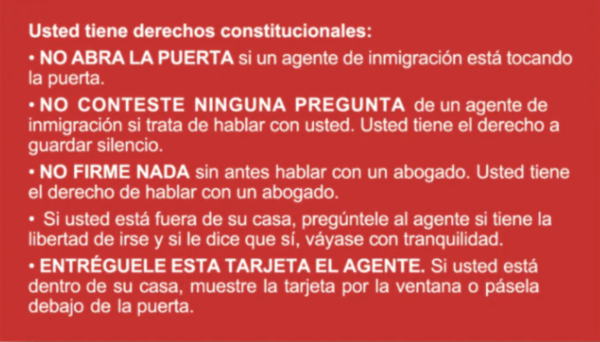
“It hurts to see that this fear has gotten so bad in such a short period of time and that it’s gotten to a point where many stores I walk into, there’s Red Cards everywhere. I knew that after the Deportation Policy, things would change quickly but I didn’t expect for it to reach Marin so quickly,” says Ortiz.
The Red Card, otherwise known as the “Know Your Rights” card was designed in over 19 languages, and is available to anyone who may feel the need to have one as it contains important information on the rights anyone has if they ever encounter ICE authorities. The New York Times, reports that the distribution of the Red Cards has recently skyrocketed.
“[The Immigrant Legal Resource Center] has received orders for about nine million cards, more than in the previous 17 years combined. Most of the orders are from nonprofits that provide them to schools, churches, clinics and food banks, which then distribute them to immigrants.”
The Canal Alliance also works really close to San Rafael High School and they offer a lot of information and resources about Knowing Your Rights. Along with this a Family Preparedness Kit is also offered which is important to help families protect themselves as immigration emergencies can continue to spread.
Wilner Alvarez works with Canal Alliance as a legal aide and provides people who work in businesses with immigration questions or concerns they may have. “I encourage people working in businesses or just people who have jobs in general to understand what their rights are. I think many may not know that they do have rights, especially our people in ‘La Parada’ who go out there everyday looking for work. I think these Red Cards could really come in handy so that way people could be prepared and have a plan in case of anything,’ Alvarez says.
‘La Parada’ is located in front of Taqueria Mi Famila and goes along the street of Bellam Boulevard to Gary Pl. This is the area where many individuals, especially men go as early as 6am in an attempt to find work as a daily laborer and have a job for the day.
“It’s a risk being out here. This area has now become known as the place where many immigrants like myself come to look for work. It would be simple for ICE to locate us and take everyone just like that. We were never safe to begin with but now it’s become worse than ever,” said an individual who wished to remain anonymous.
Construction business owner, gardener, and painter, Jose Estrada understands the feeling of the workers as he was once one of them who came to the United States as an undocumented immigrant. He passes by ‘La Parada’ almost everyday to pick up 3-4 workers a day. He’s not only putting in sweat and tears to build the life he has now for the past 30 years, but continues this routine to support the family he has now created.
He shared his story of coming to the United States as a teenager, working to provide for himself at 17. As well as going to school and receiving the education he needed. From being the young boy who worked multiple hours a week, he now has his own construction business and describes this as a privilege. He picks up workers everyday so they have an opportunity at a job he was once searching for.
“I know the feeling of every single worker I pick up whether it’s fear, anger, or even sadness. I always try to talk to them and let them know that there are people who support them, people who do care about the f*****-up shit that’s going on in the world, and the many resources out there. I carry Red Cards on me, not only to serve as protection for myself but for anyone who needs it,” says Estrada.
Although the question, “Are we always going to live in fear of what’s going to happen?” remains, receiving reassurance from the city, community, and schools helps build a stronger alliance for the one who fears the most.
“I want our SRHS students to know that if they ever feel uneasy or are in fear, they are always welcome to come talk to us or any staff member as we will always offer support and although it may be a hard time right now to trust anyone we are here for our kids and our staff,” says Mr. Dominguez.
According to the County of Marin, there is a hotline in which anyone can contact the Public Defender office for immigration support through phone at, 415-473-6321 or in person, Monday through Friday from 8:30 am-12:00 pm, 1:00 pm-4:00 pm.
With all of the new changes in the law it’s important that the community stays safe and continues to work hard and stay strong in times where families are being stripped apart. The people that have worked hard everyday to provide a living for their families deserve to live in peace without fear of what could happen to them.
“All I want is for my kids to become successful and have and get a chance at an opportunity that I wasn’t given as a child.I hope that us as a community will stand up for each other and fight against deportation coming closer to us,” says Hernandez.
She plans on making posters and putting them up in the San Rafael area to spread awareness on what is going on and how the community can help support the fear that keeps increasing. She hopes that from this people can come together and support each other and become bigger.
“As this is getting closer and closer everyday now and we now have to work together as a community to prevent our families being stripped apart because this sh** is getting real,” Estrada says.
Spanish Translation:
El temor de deportación se ha incrementado cada día más desde enero. Aquí en Marin, el presentimiento nunca se ha sentido más real.
Subtitulo: Porque el artículo es sobre un tema delicado, los nombres de estudiantiles utilizadas en esta historia son seudónimos o anónimos para asegurar la confidencialidad completamente.
Con solo 18 años y desde Totonicapan Guatemala, Mariana Herandez mira hacia la distancia en donde ve a Los Estados Unidos con la mochila que lleva en sus brazos. Los Estados Unidos, el lugar en donde se convertirá su hogar para el próximo capítulo de su vida. Este será el lugar en donde abrirá oportunidades de empleo para ella, en donde tendrá sus hijos y podrá criarlos, sin embargo, un lugar en donde el pensamiento de la deportación permanecerá al fondo de su cabeza.
Y ahora este presentimiento se ha vuelto más grande, consumiendo su vida diaria.
“Cuando vine a los Estados Unidos, yo sabía a lo que me arriesgaba. Deje todo atrás, mi familia, mi niñez, y lo más importante, el miedo. He tenido que construirme la vida para mi misma y ahora para mis hijos. Para que ellos puedan tener éxito, para que reciban una educación, y para tener un futuro, dice Hernandez.
Ya van más de tres meses desde que el presidente Donald Trump asumió el cargo de presidente en enero de este año, y según un artículo por Newsweek, ya son más de 100,000 deportaciones en todo el país. El Servicio de Immigracion y Control de Aduanas de los Estados Unidos (ICE), también informa que ha sido visto en muchas áreas en toda California tal como Bakersfield, Pomona, y Los Ángeles.
En los años anteriores, Hernandez ha visto muchas noticias sobre historias en donde inmigrantes indocumentados como ella estaban siendo deportados cada día; la separación de familias, personas trabajadoras que han sido llevadas. Ella también recuerda viendo un video inquietante y ampliamente compartido sobre “ASMR Illegal Alien Deportation”. Este video mostraba imágenes de hombres encadenados siendo subidos a aviones para ser transportados a una prisión en El Salvador.
“Ni siquiera sé cómo explicar lo que sentí al ver ese video. ¿Por qué les parece gracioso publicar algo así? Es ridículo,” dice con lágrimas en los ojos. Aunque siempre fue triste y duro escucharlo, la mayoría de las noticias eran de otro estado o estaban lejos de donde vivía.
Hasta ahora.
Fue la noticia de que ICE fue visto solamente 20 minutos de donde vivía ella en Marin que completamente trajo nuevos sentimientos de miedo: Según Point Reyes Light, George Alfaro escribió como “ ICE estuvo en la área de Novato a finales de Enero, y en la área de San Rafael a mitad de Febrero. Estas noticias se las dieron a [La Oficina de sheriff del condado de Marin] y la actividad no incluye ningún detalle, y ICE no reportó si alguien fue detenido.”
“Estuve completamente en susto; No podía creer que ICE se acercaba aun mas y mas hacia casa,” dice ella.
Intentamos de contactarnos con la alcalde de San Rafael, Kate Colin y preguntar sobre este incidente peros ella desafortunadamente no nos podia dar mas informacion mas que una breve declaración:
“La Ciudad de San Rafael mantiene su firme compromiso de apoyar y fortalecer a nuestras comunidades inmigrantes. Todos los residentes, independientemente de su estatus migratorio, merecen sentirse seguros, apoyados y valorados. Tanto en sus políticas como en su práctica, el Departamento de Policía de San Rafael no participa en la aplicación de las leyes migratorias. Según la ley federal actualmente, esto significa que el Departamento de Policía de San Rafael: no colabora con los funcionarios federales de immigracion en investigaciones, interrogatorios, detenciones, ni arrestos relacionados con el estatus migratorio; no realiza acciones de aplicación de las leyes migratorias; y no comparte informaciones sobre el estatus migratorio con agencias federales a menos que lo exija la ley.”
Según un artículo de MCBA, en el condado de Marin “hay por los menos 16,000 inmigrantes indocumentados, aproximadamente 6% de la población total del condado” [según una estimación del instituto de política migratoria.] Muchos de estos inmigrantes indocumentados son padres de niños nacidos en Estados Unidos. Son niños en el sistema educativo que desean alcanzar el éxito para ellos mismos y sus familias. La escuela secundaria de San Rafael también es el hogar de muchos estudiantes indocumentados, tanto como en clases regulares y como en el programa bridge.
Con más del 71% de los estudiantes en la escuela secundaria de San Rafael, siendo hijos de inmigrantes, el miedo los afecta más que nunca. No solo el miedo de lo que puede pasar a sus familiares y amigos, sino también lo que les espera si son separados de su familia.
“Ahora hay miedo por el clima migratorio; la gente se preocupa por lo que sucedería si ICE entrara a la escuela, pero como director puedo tranquilizar a los estudiantes y hacerles saber que mientras estén en la escuela nadie podrá acceder a ellos,” dice el director Dominguez.
Dado que la escuela no está abierta al público, nadie del exterior puede entrar sin autorización previa del director. Esto garantiza que la seguridad y privacidad de los estudiantes y maestros previene cualquier violación de su derecho a la privacidad.
“Sin una orden judicial o algún tipo de trabajo legal, la información de un estudiante no puede ni será entregada a nadie”, afirma.
Rafael Martinez, estudiante de tercer año en San Rafael dice, “honestamente estoy asustado de lo que me pasaría. La noticia de la presencia de ICE en el área de Novato me asusta. O sea iba ahí mucho para pasar el rato con mis amigos, y ahora me da miedo de ir. Es triste.”
Otros estudiantes de la San Rafael están de acuerdo.
Tengo amigos que también son inmigrantes y siempre pienso que nadie debería tener que ir a la escuela todos los días pensando que algo les podría pasar a ellos o a su familia mientras se concentran en sus estudios. Es frustrante porque, ¿y si fuera yo?” dice un estudiante de tercer año de la San Rafael que pidió permanecer anónimo.
Julia Ortiz, estudiante de último año, cuestiona todo lo que sucede en los Estados Unidos. “¿Que paso con la sensación de seguridad en tu propia comunidad? Ya he escuchado muchas historias de personas que se niegan a ir a trabajar por el miedo que tienen. Nuestra comunidad no era así hace más de 6 meses. Ya no podemos confiar en nadie.” ella dice
La escuela secundaria San Rafael ofreció una sesión tutorial informativa sobre “Conoce tus Derechos” para informar a los estudiantes sobre las últimas noticias, y ayudarles a conocer sus derechos si se encontraran con alguna autoridad de inmigracion. Aunque muchos estudiantes se sintieron mejor al saber que los escuchaban, el miedo queda.
“Me duele ver que este miedo se ha vuelto tan grave en tan poco tiempo y que ha llegado a un punto en el que muchas tiendas que entro hay Tarjetas Rojas por todas partes. Sabía que después de la Política de Deportación las cosas cambiarían rápidamente, pero no esperaba que llegara tan rápido a Marín,” dice Ortiz.
La Tarjeta Roja, también conocida como la tarjeta “Conoce tus Derechos”, se diseñó en más de 19 idiomas y está disponible para cualquier persona que la necesite, ya que contiene información importante sobre los derechos que tiene cualquier persona en caso de encontrarse con las autoridades del ICE. El New York Times informa que la distribución de Tarjetas Rojas se ha disparado recientemente.
“[el centro de recursos legales para inmigrantes] han recibido órdenes por unos nueve millones de tarjetas, más que en los 17 años anteriores juntos. La mayoría de los órdenes provienen de organizaciones que los proporcionan a escuelas, iglesias, clínicas y bancos de alimentos, que luego los distribuyen a los inmigrantes.”
Canal Alliance también trabaja muy cerca de la secundaria San Rafael y ofrece mucha información y recursos sobre cómo conocer sus derechos. Además, se ofrece un Kit de Preparación Familiar, importante para ayudar a las familias a protegerse de emergencias migratorias.
Wilner Alvarez trabaja con Canal Alliance como asistente legal y ayuda a las personas que trabajan en empresas con sus preguntas o inquietudes sobre inmigración. “Ánimo a las personas que trabajan en empresas o simplemente a las personas que tienen trabajo en general a que comprendan cuáles son sus derechos, especialmente nuestra gente de La Parada, que sale todos los días a buscar trabajo. Creo que estas Tarjetas Rojas podrían ser muy útiles para que la gente esté preparada y que tengan un plan en caso de cualquier cosa”, dice Álvarez.
La Parada se encuentra frente a la Taquería Mi Familia y recorre la calle Bellam Boulevard hasta Gary Pl. Esta es la área donde muchas personas, especialmente hombres, salen desde la 6 de la mañana para intentar encontrar trabajo para todos los días o solo por un día.
“Es un riesgo estar aquí. Esta área se ha convertido en el lugar donde muchos inmigrantes como yo venimos a buscar trabajo. Sería fácil para ICE localizarnos y llevarse a todos. nunca estuvimos seguros, pero ahora es peor que nunca,” dijo una persona que pidió permanecer anónimo.
José Estrada, dueño de una empresa de construcción, jardinero y pintor, comprende el sentir de los trabajadores, ya que él mismo fue uno de ellos al llegar a Estados Unidos como inmigrante indocumentado. Pasa por La Parada casi a diario para recoger de 3 a 4 trabajadores. No solo está poniendo sudor y lágrimas para construir la vida que tiene ahora durante los últimos 30 años, sino que continúa con esta rutina para apoyar a la familia que ahora ha creado.
Compartió su historia de venir a los Estados Unidos cuando era adolescente, trabajando para mantenerse a él mismo a los 17 años. También él iba a la escuela para recibir la educación que necesitaba. De ser el joven que trabajaba varias horas a la semana, ahora tiene su propio negocio de construcción y lo describe como un privilegio. Recoge a trabajadores todos los días para que tengan la oportunidad de trabajar. La misma oportunidad que él buscaba antes.
“Conozco el sentimiento de cada trabajador que recojo, ya sea miedo, enojo o incluso tristeza. Siempre trato de hablar con ellos y hacerles saber que hay personas que los apoyan, personas que se preocupan por la mierda que está pasando en el mundo y los muchos recursos que hay por ahí. Llevo conmigo tarjetas rojas, no sólo para protegerme, sino para cualquier persona que lo necesite”, dice Estrada.
Aunque la pregunta “¿Siempre vamos a vivir con miedo de lo que pueda pasar?” persiste. la tranquilidad de la ciudad, la comunidad y las escuelas ayuda a construir una alianza más sólida para quienes más temen.
“Quiero que nuestros estudiantes de SRHS sepan que si alguna vez se sienten incómodos o tienen miedo, siempre son bienvenidos a hablar con nosotros o con cualquier miembro del personal, ya que siempre les ofreceremos apoyo y, aunque ahora mismo pueda ser difícil confiar en alguien, estamos aquí para nuestros estudiantes y nuestro personal”, dice el director Dominguez.
Según el Condado de Marin, hay una línea directa en la que cualquier persona puede comunicarse con la oficina del Defensor Público para obtener apoyo de inmigración por teléfono al 415-473-6321 o en persona, de lunes a viernes de 8:30 a. m. a 12:00 p. m. y de 1:00 p. m. a 4:00 p.m.
Con todos los nuevos cambios en la ley, es importante que las personas en la comunidad se mantengan seguros y trabajando duro y siendo fuertes en tiempos donde las familias son separadas. Las personas que han trabajado duro todos los días para mantener a sus familias merecen vivir en paz sin temor a lo que les pueda pasar.
“Todo lo que quiero es que mis hijos tengan éxito y tengan la oportunidad que yo no tuve de niña. Espero que como comunidad nos apoyemos mutuamente y luchemos para que la deportación no se acerque”, dice Hernández.
Planea hacer carteles y colocarlos en el área de San Rafael para crear conciencia sobre lo que está sucediendo y cómo la comunidad puede ayudar a combatir el miedo que sigue aumentando. Espera que, a partir de esto, las personas puedan unirse, apoyarse mutuamente y crecer.
“Como esto se acerca cada vez más, tenemos que trabajar juntos como comunidad para evitar que nuestras familias sean separadas, porque esto se está volviendo real”, dice Estrada.


